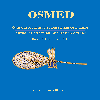Manisa Para Vakıfları[1867-1912]
The Cash Waqfs of Manisa [1867-1912]
___
- Vakıflar Genel Müdürlüğü Arşivi (VGMA), Vakfiye Defterleri: 584, 585, 586, 587, 588, 589, 591, 600, 601, 602, 603, 606, 609, 610, 1673, 2271, 2355.
- Manisa Şer’iyye Sicilleri (MŞS): 339, 341, 344, 351, 356, 358.
- Salname-i Vilayet-i Aydın, H.1326/M.1908, Vilayet Basımevi 2. Araştırma Eserler
- Ahbab, Yakup. “Kalkandelen Para Vakıfları”, Osmanlı Medeniyeti Araştırmaları Dergisi, Vol.3, No.5, ss.49-71, 2017.
- Akgündüz, Ahmet. İslâm Hukukunda ve Osmanlı Tatbikatında Vakıf Müessesesi, Osmanlı Araştırmaları Vakfı Yayınları, İstanbul, 2013.
- Alkan, Mustafa. “Uşak Para Vakıfları (1890-1923)”, Belleten, (LXX/258), ss.743-774, 2006.
- Atar, Abdülkadir. “Osmanlı Döneminde Safranbolu Para Vakıfları”, Vakıflar Dergisi, S.52, ss.93-123, 2019.
- Aydın, H. Veli. “Selanik’te 18. Yüzyılın İlk Yarısında Para Vakıfları ve Kredi İşlemleri”, Tarih İncelemeleri Dergisi, XXIX / 1, ss.87-106, 2014.
- Bilgili, İsmail. “Bekir Sami Paşa Nakşî-Hâlidî Zaviyesinin Konya Islâh-ı Medâris-i İslâmiye Medresesine Dönüşümü ve Zaviyenin Para Vakfiyesi”, Necmettin Erbakan Üniversitesi İlahiyat Fakültesi Dergisi, 47, ss.15-56, 2019.
- Çağatay, Neşet. Güncel Konular Üzerine Makaleler, Türk Tarih Kurumu Basımevi, Ankara, 1994.
- Çağatay, Neşet. “Osmanlı İmparatorluğunda Riba-Faiz Konusu Para Vakıfları ve Bankacılık”, Vakıflar Dergisi, S.9, ss.39-56, 1971.
- Çiftçi, Cafer. “18. Yüzyılda Bursa’da Para Vakıfları ve Kredi İşlemleri”, Ankara Üniversitesi Dil ve Tarih Coğrafya Fakültesi Tarih Araştırmaları Dergisi, C.XXIII, S.36, Ankara, ss.80-102, 2004.
- Çölkesen, Derya - Arslan, Mehmet. “Türkiye’de İlkokul Seviyesindeki Din ve Ahlak Eğitiminin Tarihçesi”, Akademik Sosyal Araştırmalar Dergisi, Yıl: 4, S.28, ss.1-13, Temmuz 2016.
- Değer, Alper - Erdoğan, Canan. “16. ve 18. Yüzyıl Arasında Bursa Para Vakıfları ve Bursa Ekonomisine Etkileri”, Uludağ Üniversitesi İktisadi ve İdari Bilimler Fakültesi Dergisi, C.XXVIII, S.1, Bursa, ss.85-99, 2009.
- Gökmen, Ertan - Demir, Tanju - Heybeli, Hacer. “ Şer’iyye Sicillerindeki Muhasebe Kayıtlarına Göre XVIII. Yüzyılda Manisa Vakıfları, Celal Bayar Üniversitesi Sosyal Bilimler Dergisi, C.14, S.3, ss.274-325, 2016.
- Günay, Hacı Mehmet. “Vakıf”, DİA, C.42, Türkiye Diyanet Vakfı Yayınları, Ankara, ss.475-479, 2012.
- Güneri, Hasan. “Vakıf İşletmeleri”, Vakıflar Dergisi, S.11, Ankara, ss.25-46, 1976.
- Halaçoğlu, Yusuf. XIV-XVII. Yüzyıllarda Osmanlılarda Devlet Teşkilatı ve Sosyal Yapı, Türk Tarih Kurumu Basımevi, Ankara, 1998.
- Kaya, Süleyman. “Para Vakıfları Üzerine” Türkiye Araştırmaları Literatür Dergisi, C.1, S.1, ss.189-203, 2003.
- Kıvrım, İsmail. “Osmanlı Dönemi’nde Rize ve Çevresinde Kurulan Para Vakıfları (1859-1913),” Vakıflar Dergisi, 46, ss.97-116, Aralık 2016.
- Kıvrım, İsmail. “Osmanlı Döneminde Gümüşhane ve Çevresinde Kurulan Para Vakıfları”, History Studies, Volume 2/3, ss.231-243, 2010.
- Köprülü, Mehmet Fuat. “Vakıf Müessesesinin Hukuki Mahiyeti ve Tarihi Tekamülü”, Vakıflar Dergisi, 2, ss.1-32, 1942.
- Kurt, İsmail. Para Vakıfları Nazariyat ve Tatbikat, Ensar Neşriyat, İstanbul, 2015.
- Mandaville, John, E.. “Faizli Dindarlık: Osmanlı İmparatorluğunda Para Vakfı Tartışması,” Türkiye Günlüğü, (Çev. Fethi Gedikli), S.5, ss.129-144, Ankara 1998.
- Okur, Kâşif Hamdi. “Para Vakıfları Bağlamında Osmanlı Hukuk Düzeni ve Ebussuûd Efendi’nin Hukuk Anlayışı Üzerine Bazı Değerlendirmeler”, Gazi Üniversitesi Çorum İlahiyat Fakültesi Dergisi, C.IV, S.7-8, ss.33-58, 2005/1-2.
- Osmanağaoğlu, Cihan. “Osmanlı Devleti’nin Klasik Döneminde Para Vakıfları Hukuki Yönü”, Maltepe Üniversitesi Hukuk Fakültesi Dergisi, C.0, S.2, ss.277-299, 2010.
- Özcan, Tahsin. Osmanlı Para Vakıfları Kanuni Dönemi Üsküdar Örneği, Türk Tarih Kurumu Basımevi, Ankara, 2003.
- Özcan, Tahsin. “Osmanlı Toplumuna Özgü Bir Finansman Modeli: Para Vakıfları”, Çerçeve Dergisi, S.48, ss.123-128, 2008.
- Öztürk, Nazif. “Mütevelli”, DİA, C.32, ss.217-220, 2006.
- Pakalın, Mehmet Zeki. Osmanlı Tarih Deyimleri ve Terimleri Sözlüğü II, MEB Yayınları, İstanbul,1993.
- Pamuk, Şevket. Osmanlı İmparatorluğu’nda Paranın Tarihi, Tarih Vakfı Yurt Yayınları, İstanbul, 2000.
- Singer, Amy. Osmanlı’da Hayırseverlik Kudüs’te Bir Haseki Sultan İmareti, (Çev: Dilek Şendil), Tarih Vakfı Yurt Yayınları, İstanbul, 2004.
- Şibil, Bayram. “Vakfın Mali Bünyesi ve Kaynakları” , II. Vakıf Haftası Kitabı, Ankara 2000.
- Şimşek, Mehmet. “Osmanlı Cemiyetinde Para Vakıfları Üzerinde Münakaşalar”, Ankara Üniversitesi İlahiyat Fakültesi Dergisi, C. XXVII, S.1, Ankara, ss.207-220, 1986.
- Türkoğlu, İrfan. “Osmanlı Devleti’nde Para Vakıflarının Gelir Dağılımı Üzerı̇ndekı̇ Etkileri̇”, Süleyman Demirel Üniversitesi İktisadi ve idari Bilimler Fakültesi Dergisi, C. 18, S. 2, ss.187-196, 2013.
- Usta, Sebahittin. “Trabzon’da Para Vakıfları (1550-1650), Karadeniz İncelemeleri Dergisi, 2016; (20), ss.55-76, 2016.
- Ünal, Mehmet Ali. Osmanlı Müesseseleri Tarihi, Kardelen Kitabevi, Isparta, 1998.
- Yediyıldız, Bahaeddin. XVIII. Yüzyılda Türkiye’de Vakıf Müessesi Bir Sosyal Tarih İncelemesi, Türk Tarih Kurumu Basımevi, Ankara, 2003.
- Yediyıldız, Bahaeddin. “Vakıf”, İslâm Ansiklopedisi, C.XIII, Milli Eğitim Basımevi, İstanbul, ss.153-172, 1986.
- http://teis.yesevi.edu.tr/madde-detay/ali-haydar-aksehirlizade, Erişim Tarihi: 18.12.2020.
- Yayın Aralığı: 4
- Başlangıç: 2015
- Yayıncı: Selim Hilmi Özkan
XVIII. Yüzyılda Şark Valilerinin İktidar Oyunları ve Bir Feodalin Güç Devşirmesi: Millilü Timur Paşa
Manisa Para Vakıfları[1867-1912]
Abdullah DOĞTEKİN, İlker Mümün ÇAĞLAR
Saruhanlar Köyü’nün 19. Yüzyılda Sosyo-Ekonomik Yapısı
XIX. Yüzyılda Göçebe Hayatının Temsilcisi Olarak Varsak Köyü
